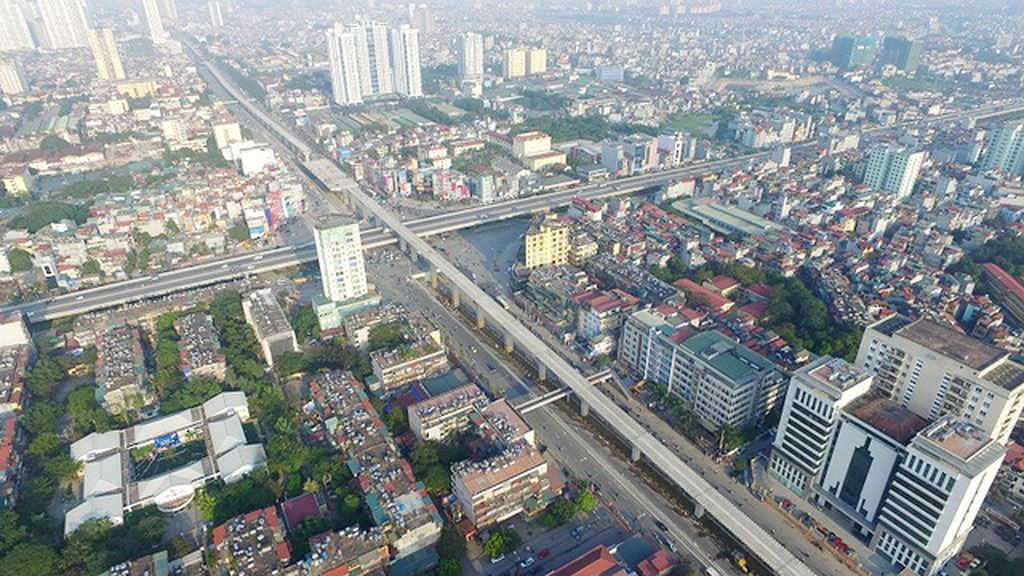Outcomes after ten-year administrative boundary expansion
VGP – The Capital City of Ha Noi has attained important and comprehensive achievements in socio-economic performance after ten-year administrative boundary expansion.
 |
| Illustration photo |
Firstly, social infrastructure development
Ha Noi has mobilized all resources to build itself a smart city with smart systems managing infrastructure, core database, electronic government, education, healthcare, transport, and the environment.
So far, the city houses 83 IT enterprises providing 170 software systems and provide a wide area network (WAN) to all 584 communes, wards, and towns. Meanwhile, the city’s database center has been expanded.
The local authorities have also attached importance to housing development with 43 social housing projects which provided 4 million m2 of floor. Average housing area was 25.86 m2 per person. Tree coverage area was 7.94m2 per person.
Secondly, strong transport system
The local authorities extremely paid attention to infrastructure development especially key transport projects such as Ring Road 1 (Hoang Cau-Voi Phuc); Ring Road 2 with over 43km of length connecting Vinh Tuy-Lang-Cau Giay-Buoi-Nhat Tan-Dong Hoi-Gia Lam.
The Ring Road 1 has entered site clearance period. The six-line route will comprise two overpasses at Giang Vo-Lang Ha intersection and Nguyen Chi Thanh-De La Thanh intersection. Once coming into operation, the Ring Road 1 would help ease regular traffic congestion at la Thanh and De La Thanh streets.
Thirdly, fast and sustainable economic growth
In the 2008-2017 period, local economic growth was only 7.41%. In 2018, Ha Noi’s GRDP expanded 7.61% with VND 920,270 billion. Average income per capita touched over VND 117 million, equivalent to US$ 5,134 per person per year. In 2018, Ha Noi became the leading FDI recipient with over US$ 7.5 billion in 2018 and US$ 6.23 billion in the first nine months of 2019.
Fourth, rural development and better rural living standards
In 2019, six out of 18 districts in Ha Noi met new rural area standards. Up to 325 out of 386 communes were recognized as new rural area ones (accounting for 84.2%). Average income per capita in rural areas was VND 46.5 million, 4.5 times higher than in 2008.
Fifth, prevention and settlement of pollution
Over the past time, Ha Noi spared no effort to remove polluted production sites, universities, warehouses, and bus stations out of the inner of the city.
Sixth, better social security policies
The poverty rate dropped from 8.43% in 2008 to only 1.68% in 2018. The number of average job generation was about 140,000. Unemployment rate fell from 3.18% in 2009 to only 2.41% in 2018. All families of people with merits were supported. Living standards of mountainous and ethnic minority people were improved.
Seventh, cultural development and building of civilized Hanoians
The city spent over VND 107,000 billion on socio-cultural development including nearly VND 4,300 billion.
Eighth, investment in education and training
The city attached importance to investing in education and training. In the 2008-2018 period, the city built 434 schools including 943 schools recognized as national standard schools (meeting 66.2%).
Ha Noi was the first locality which piloted electric contact books.
Ninth, synchronous medical system
So far 100% of wards and communes had medical clinics.
By late 2018, the number of average hospital beds was 26.5 per 10,000 people.
Tenth, impressive sports progress
The rate of people regularly doing exercises increased from 27.5% in 2010 to 43% in 2018./.
By Kim Loan

